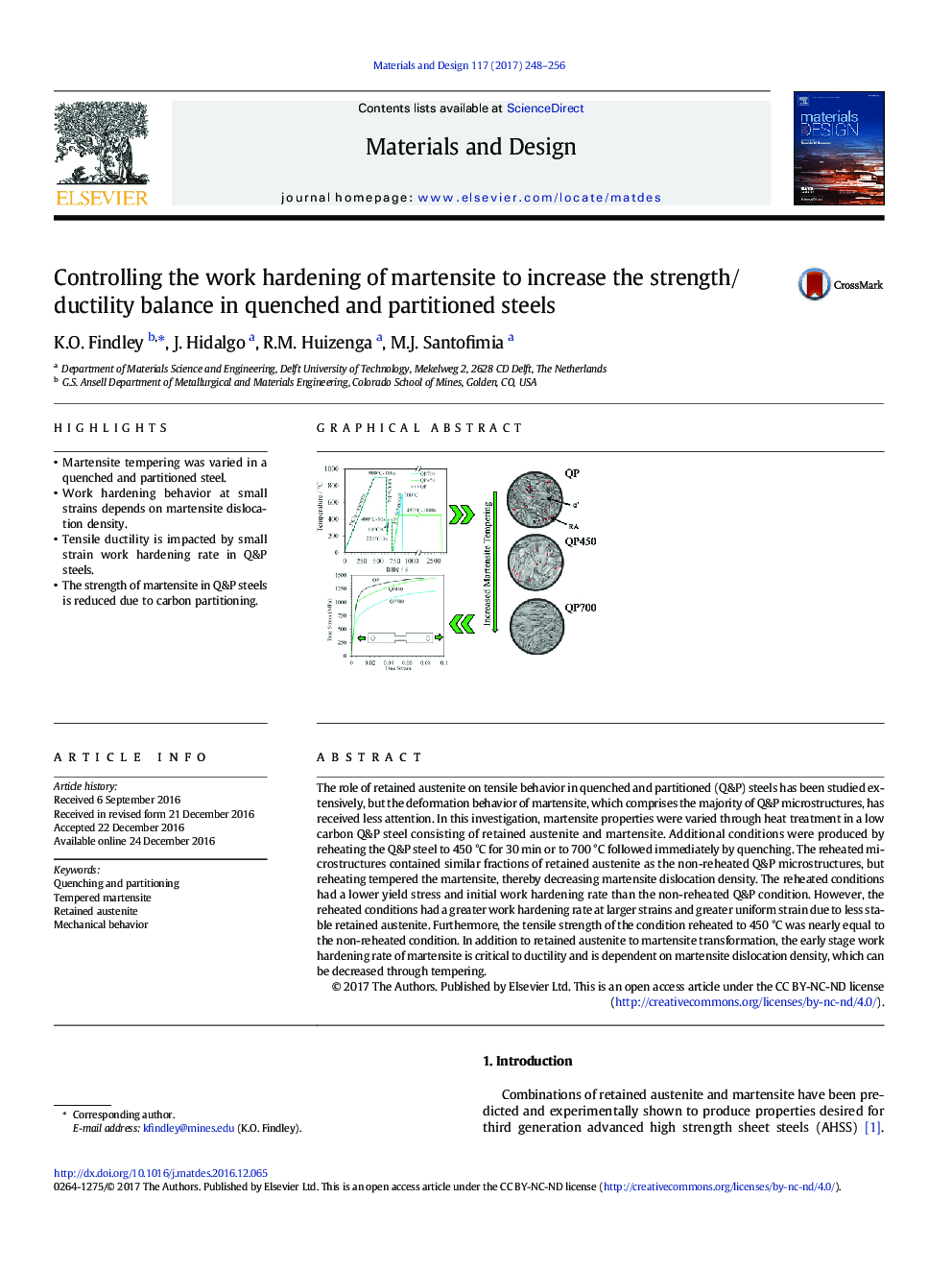| کد مقاله | کد نشریه | سال انتشار | مقاله انگلیسی | نسخه تمام متن |
|---|---|---|---|---|
| 5023756 | 1470265 | 2017 | 9 صفحه PDF | دانلود رایگان |
- Martensite tempering was varied in a quenched and partitioned steel.
- Work hardening behavior at small strains depends on martensite dislocation density.
- Tensile ductility is impacted by small strain work hardening rate in Q&P steels.
- The strength of martensite in Q&P steels is reduced due to carbon partitioning.
The role of retained austenite on tensile behavior in quenched and partitioned (Q&P) steels has been studied extensively, but the deformation behavior of martensite, which comprises the majority of Q&P microstructures, has received less attention. In this investigation, martensite properties were varied through heat treatment in a low carbon Q&P steel consisting of retained austenite and martensite. Additional conditions were produced by reheating the Q&P steel to 450 °C for 30 min or to 700 °C followed immediately by quenching. The reheated microstructures contained similar fractions of retained austenite as the non-reheated Q&P microstructures, but reheating tempered the martensite, thereby decreasing martensite dislocation density. The reheated conditions had a lower yield stress and initial work hardening rate than the non-reheated Q&P condition. However, the reheated conditions had a greater work hardening rate at larger strains and greater uniform strain due to less stable retained austenite. Furthermore, the tensile strength of the condition reheated to 450 °C was nearly equal to the non-reheated condition. In addition to retained austenite to martensite transformation, the early stage work hardening rate of martensite is critical to ductility and is dependent on martensite dislocation density, which can be decreased through tempering.
168
Journal: Materials & Design - Volume 117, 5 March 2017, Pages 248-256
